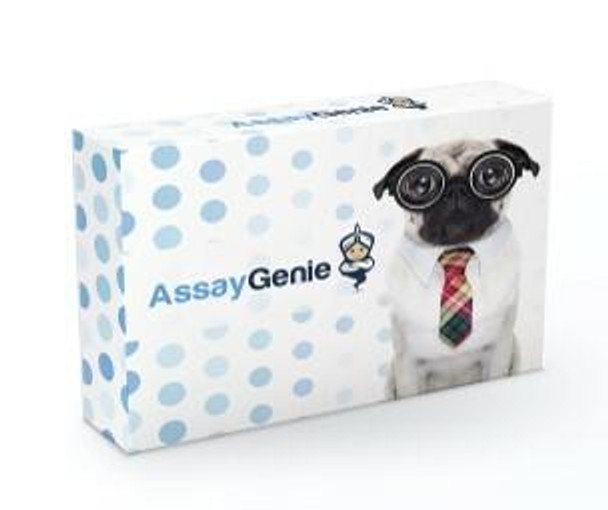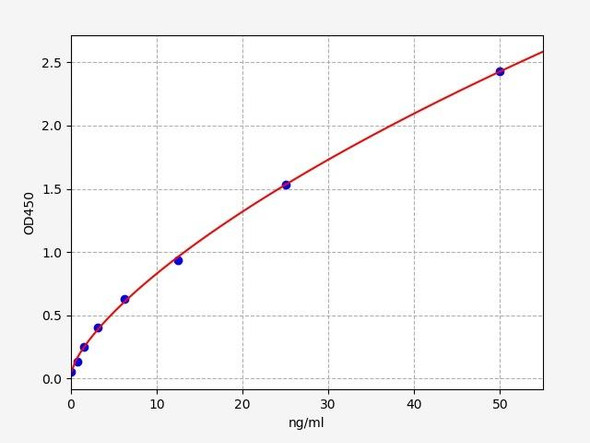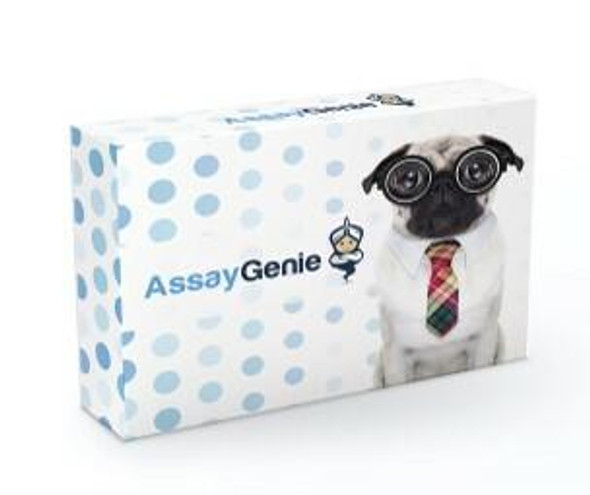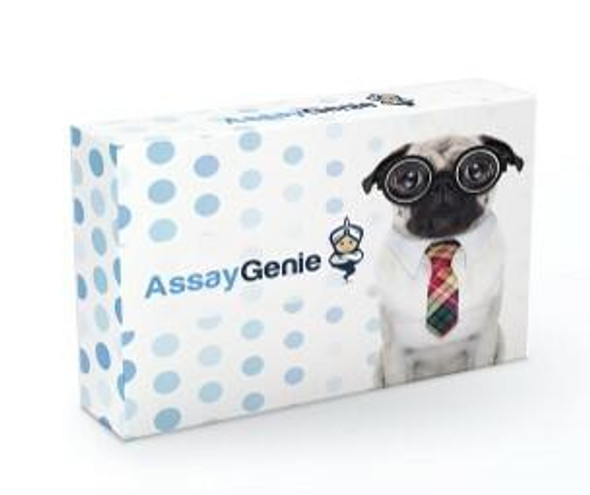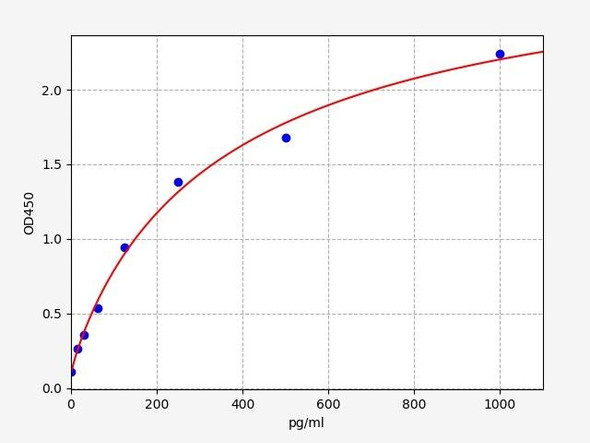Description
Rat Inhibin-B PharmaGenie ELISA Kit (SBRS0138)
| Product SKU: | SBRS0138 |
| Size: | 96T |
| Application: | This kit targets the beta B subunit, and therefore theoretically detects Activin B and Activin AB in addition to Inhibin B. Cross Reactivity: This ELISA kit shows no cross-reactivity with any of the cytokines tested: Ghrelin, Nesfatin, Angiotensin II, NPY and APC. |
| Uniprot: | P17490 / P17491 |
| Gene ID: | 24504 / 25196 |
| Gene Names: | INHA / INHBB |
| Synonyms: | Inhibin B (INHB) (Inhibin alpha chain and Inhibin beta B chain (Activin beta-B chain)) |
| Target Species: | Human, Mouse, Rat |
| Compatible Sample Types: | Cell Culture Supernatants, Serum |
| Design Principle: | Competition-based |
| Method of Detection: | Colorimetric |
| Quantitative/Semi-Quantitative: | Quantitative |
| Range: | 1-10,000 pg/ml |
| Sensitivity: | 2 pg/ml |
| Recommended Dilution: | Human: 2X, Mouse: 2X, Rat: 2X |
| Storage/Stability: | Standard, Biotinylated Inhibin B peptide, and Positive Control should be stored at -20°C after arrival. Avoid multiple freeze-thaws. The remaining kit components may be stored at 4°C. Opened Microplate Wells and antibody (Item N) may be stored for up to 1 month at 2 to 8°C. Return unused wells to the pouch containing desiccant pack and reseal along entire edge. |
- Pre-Coated 96-well Strip Microplate
- Wash Buffer
- Standard Peptide
- Assay Diluent(s)
- Biotinylated Peptide
- HRP-Streptavidin
- TMB One-Step Substrate
- Stop Solution
- Assay Diagram
- Positive Control Sample
- Capture Antibody
- Technical Manual
Other materials and equipment required:
The Assay Genie Rat Inhibin-B PharmaGenie ELISA Kit (SBRS0138) will require other equipment and materials to carry out the assay. Please see list below for further details.
- Distilled or deionized water
- Precision pipettes to deliver 2 ul to 1 ml volumes
- Adjustable 1-25 ml pipettes for reagent preparation
- 100 ml and 1 liter graduated cylinders
- Tubes to prepare standard and sample dilutions
- Orbital shaker
- Aluminum foil
- Saran Wrap
- Absorbent paper
- Microplate reader capable of measuring absorbance at 450nm
- SigmaPlot software (or other software that can perform four-parameter logistic regression models)
- Prepare all reagents, samples and standards as instructed.
- Add 100 ul detection antibody to each well.
- Incubate 1.5 h at RT or O/N at 4°C.
- Add 100 ul standard or sample to each well.
- Incubate 2.5 h at RT.
- Add 100 ul prepared streptavidin solution.
- Incubate 45 min at RT.
- Add 100 ul TMB One-Step Substrate Reagent to each well.
- Incubate 30 min at RT.
- Add 50 ul Stop Solution to each well.
- Read plate at 450 nm immediately.
Inhibin B belongs to TGF-beta superfamily, which members also include Inhibin A, TGF-betas (transforming growth factors), activins, BMPs (bone morphogenetic proteins). Among these factors, inhibins are most closely related to activins. The activin and inhibin are both dimeric protein complexes in structure, and in each complex, the two monomers are linked to one another by a single disulfide bond. In addition, both complexes are derived from the same family of related genes and proteins but differ in their subunit composition. Inhibins are disulfide-linked heterodimers comprising an alpha-subunit and beta-subunit.Inhibin B is composed of one alpha subunit and one beta B subunit; Inhibin A is composed of one alpha subunit and one beta A subunit. By contrast, activins are homo- or hetero-dimers, forming activin A (2 beta A subunits), activin B (2 beta B subunits), or activin AB (1 beta A subunit and 1 beta B subunit). Inhibins have played important roles in regulating reproductive health. Inhibins and activins generally play opposing roles as modulators of the reproductive axis and have multiple roles in the regulation of reproductive physiology in both females and males. Recently the emerging roles for inhibins in tumorigenesis have been reported. Inhibins has been reported as potential tumor suppressors in several different tissues, including ovary, prostate, endometrium and breasts, with loss of inhibin expression or loss of sensitivity linked to tumor initiation and progression as well as poor patient survival.

